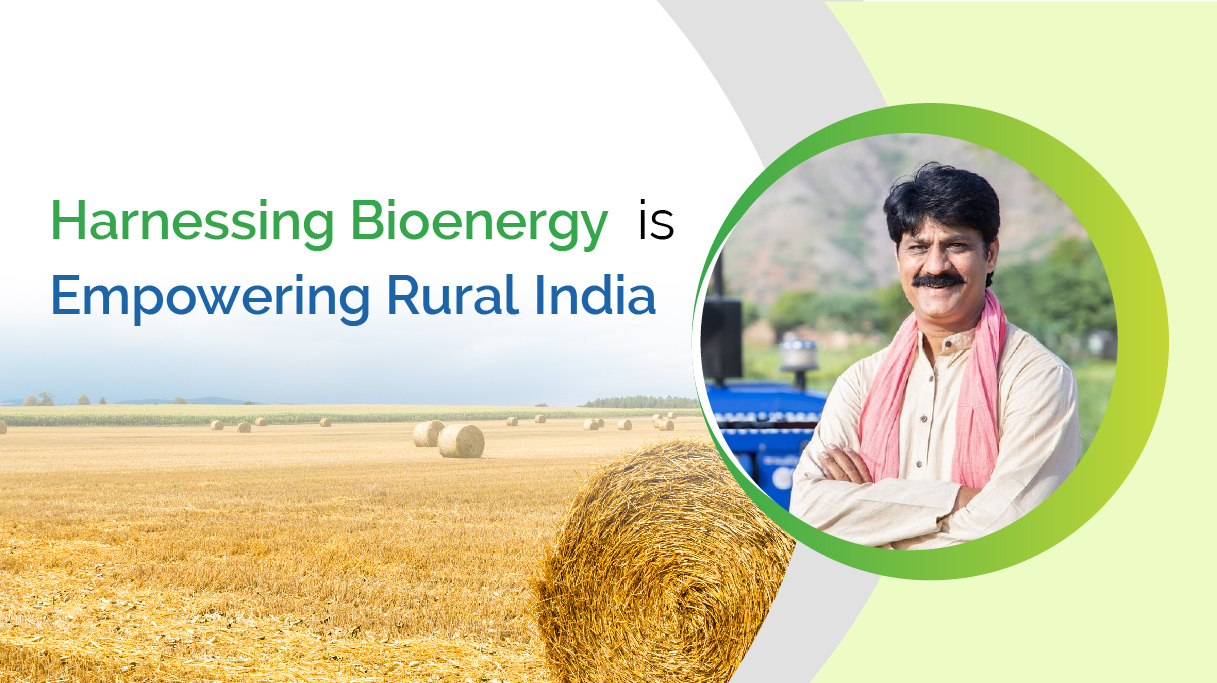 September 23, 2022
September 23, 2022
Bioenergy is a form of renewable energy. It is obtained by processing loose biomass into various types of fuels or converting it to heat and electricity. Biomass is any material that comes from plants and animals, such as agricultural crop residues, forest residues, wood processing residues, and municipal waste to mention a few.
Most farmers have no choice but to burn the waste, an easier and more economical way of farm waste management. This practice is quite common despite the negative impact it has on the environment in terms of air, water, and soil pollution, and the long-term changes in the surroundings which also affect the microbial lifeforms.
Energy Generation from Agricultural Waste India’s efforts in the direction of transitioning from fossil fuels to low-carbon alternatives have gained a lot of momentum in the past two decades. Driven by the need to remedy the negative effects of harmful emissions and reduce dependency on foreign fuels, India is harnessing energy from alternate resources. Bioenergy is one sector where the scope for utilizing agri-waste to produce cleaner fuels needs a push. India’s Annual Agri-waste Production and Energy Generation Potential-
Each year, an estimated 650 million tons of agricultural waste is generated in India.
-
As per the Ministry of New and Renewable Energy Resources, the amount of agri-waste generated annually has the potential to generate 24 GW of energy.
-
India currently has 10 GW of biomass-based power generation capacity installed.
- According to InfraCo Asia, if the installed capacity is fully utilized, agri-waste can bring down the demand for coal by over 250 million tons each year.
How is Rural India Playing a Vital Part in Harnessing Bioenergy
In every harvest cycle, farmers need to deal with crop residue disposal and agricultural waste management. Most small and medium-scale farmers utilize only a part of the agricultural waste generated in the form of animal feed and the rest is burned. This agricultural waste, also known as biomass, can be processed and used as valuable fuels. Loose biomass has a low thermal value by itself. The process of briquetting and pelleting converts various types of biomass, such as sugarcane bagasse, ground nut shells, etc, into energy-dense briquettes and pellets for use in industrial boilers. The process starts with the collection of raw biomass from farmers and the end-users are industries that use the Biofuels produced from biomass to fire boilers. This presents an opportunity for farmers and several rural businesses to help streamline the process and benefit from it at the same time. Opportunities for Farmers and Rural participants In the year 2007, the Malavalli powerplant in Karnataka, generated 400 local jobs while providing electricity through a renewable resource, which is sugarcane crop residues. Nearly 400 workers supplied 140 tonnes of waste to the plant every day, which would otherwise be burned down or rot for lack of proper storage. The waste was processed at the plant site and used in boilers along with slow-burning energy-dense eucalyptus fuels to increase burning efficiency. The electricity generated from the plant was sold to the nearby grid and made available to the local community. In this process, farmers were able to earn money from selling their farm waste, numerous jobs were created in the process, and a reliable power supply was facilitated for locals in the process. On top of that, the negative impact on the environment from burning the waste was cut down substantially. This is an example of how farmers and rural communities have been playing an integral part in the process of harnessing Bioenergy. Selling agricultural waste to create additional income is just one way the Bioenergy sector is empowering rural India. The way to identify the opportunities here is to look at the challenges. Storage and transportation are areas that create numerous avenues in terms of job creation and new business opportunities for locals to simplify the process. Ways of Empowering Rural Communities Harnessing bioenergy has created new ways of generating employment and business opportunities in any rural community:-
Making appropriate equipment available
- Providing warehouses for storage on rent
-
Rural Aggregators
-
Biomass Transportation providers
-
Biomass Processing plants
In recent years, we have gained a much better understanding of the many challenges and possibilities in harnessing bioenergy. As we move towards cleaner low carbon emission fuels, the scope for agricultural landowners in creating supplies for agro-based energy production is likely to grow immensely. The fact that a variety of agricultural waste can be converted to Biofuels is a game-changer as locally grown crops and residues can be processed and supplied bringing down the cost and emissions from logistics.
342 Views 1 Comments


 December 19, 2022
December 19, 2022
Graphinet Developer
says:Hi